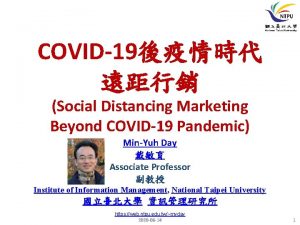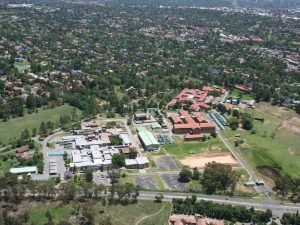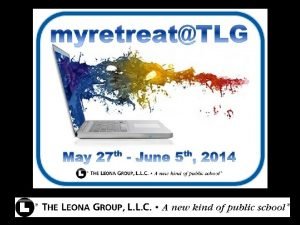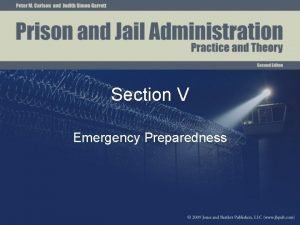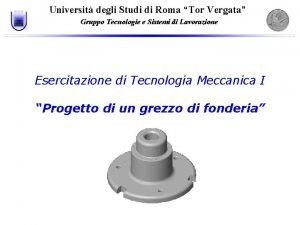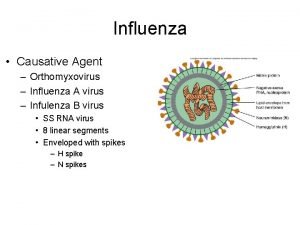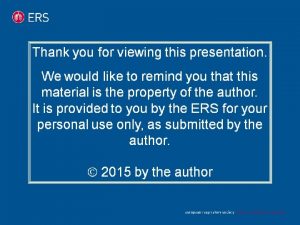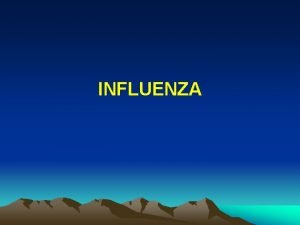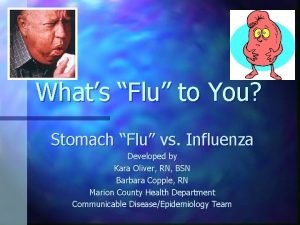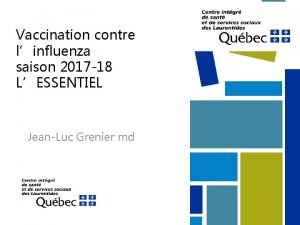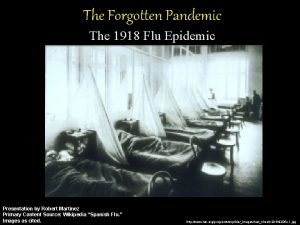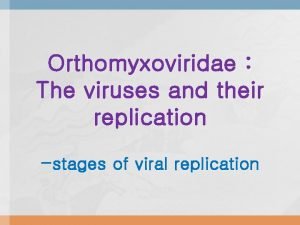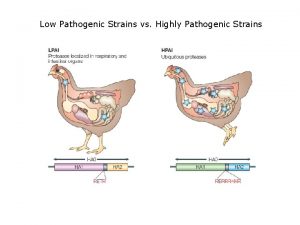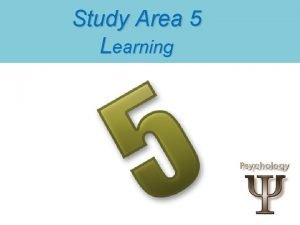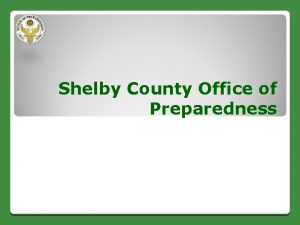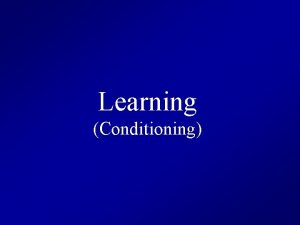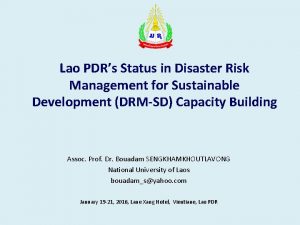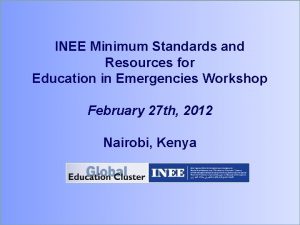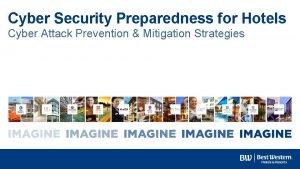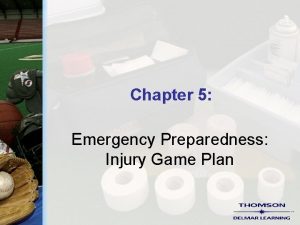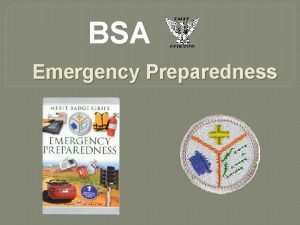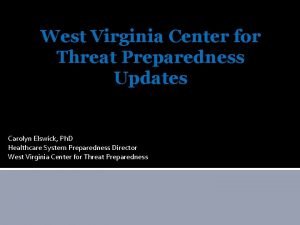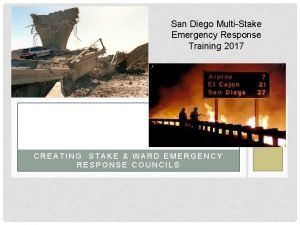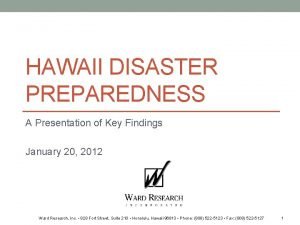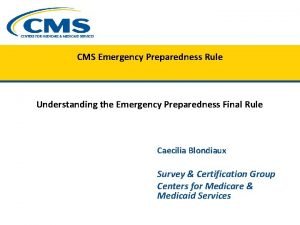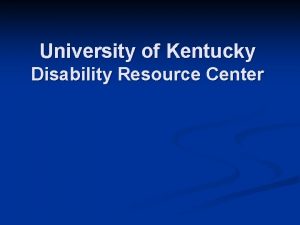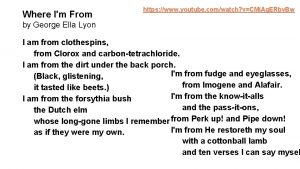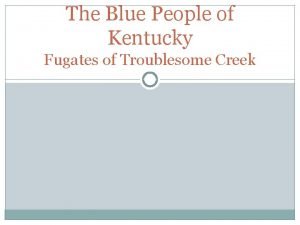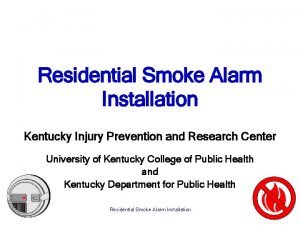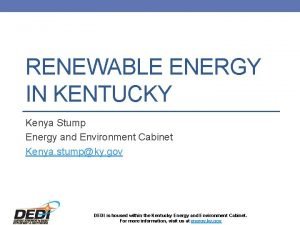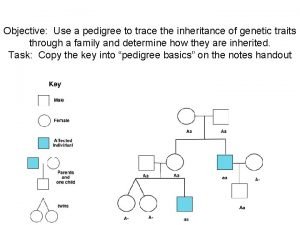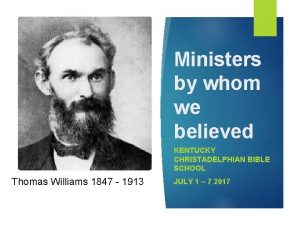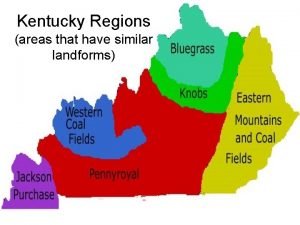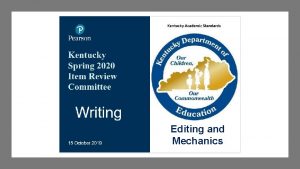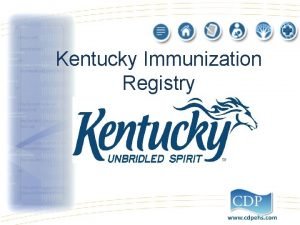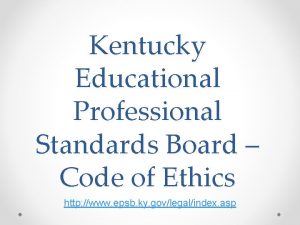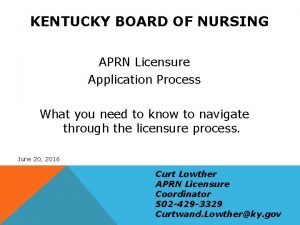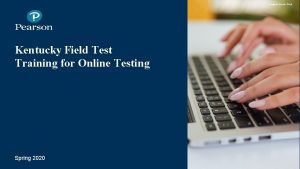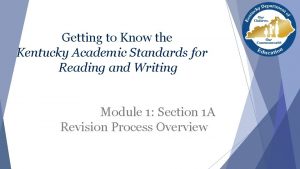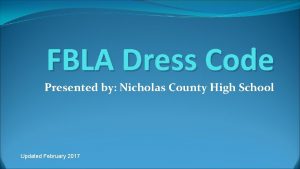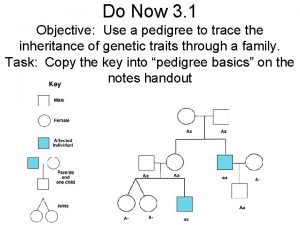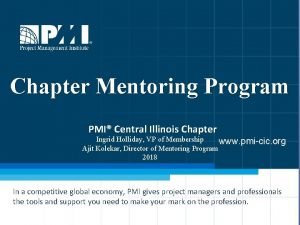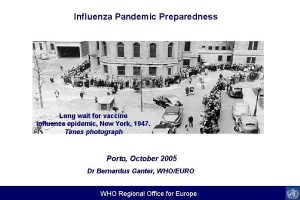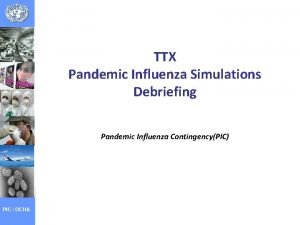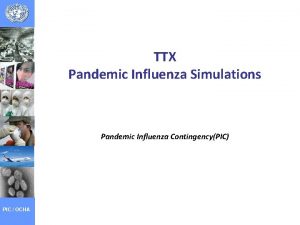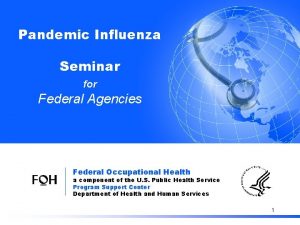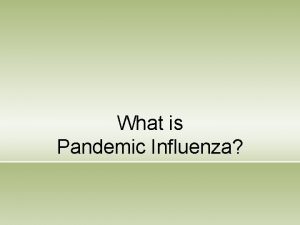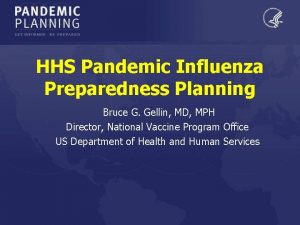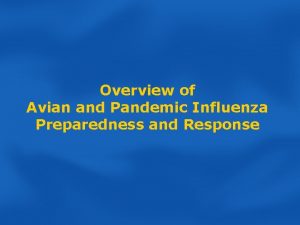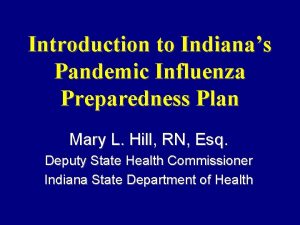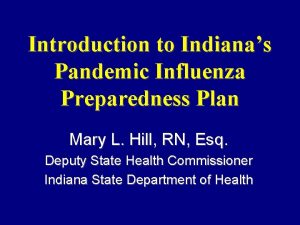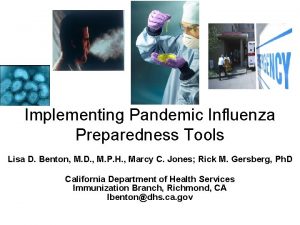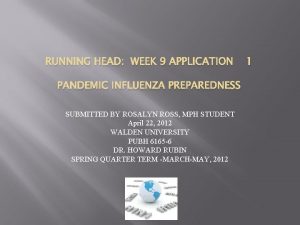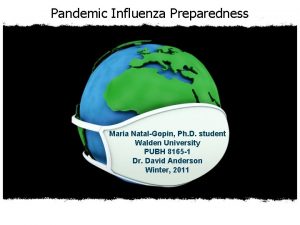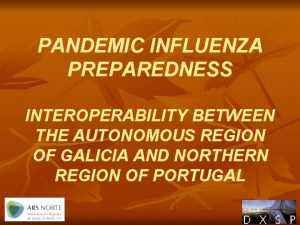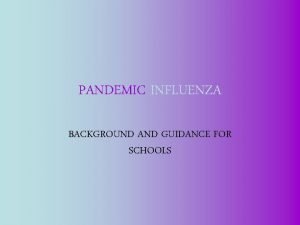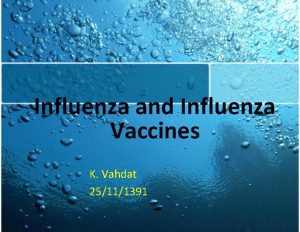Kentucky Pandemic Influenza Preparedness Planning Pandemic Influenza and










































































- Slides: 74

Kentucky Pandemic Influenza Preparedness Planning Pandemic Influenza and Terrorist Exercise Planning Workshop October 7 -8, 2008 T. J. Sugg Epidemiological Response Coordinator Kentucky Department for Public Health

Objectives • Influenza characteristics • Kentucky PI preparedness initiatives • Fatality management planning

Influenza • Respiratory infection • Easily Transmitted: inhalation of aerosols from an infected person’s coughing and sneezing • Short Incubation Period: 1 to 5 days from exposure to onset of symptoms • Highly Communicable: 1 -2 days before to 4 -5 days after onset of symptoms • Timing: usually occurs December through March in North America—but not necessarily in pandemics

Influenza Symptoms (can vary from mild to life-threatening) Rapid onset of: Fever, chills, body aches, sore throat, non -productive cough, runny nose, headache • Severe cases: pneumonia & secondary complications, respiratory distress • Bird flu cases also exhibit: massive lung inflammation, sometimes conjunctivitis and encephalitis

The Burden of Seasonal Influenza • Globally: 250, 000 to 500, 000 deaths each year • In the United States each year: – 36, 000 deaths – >200, 000 hospitalizations – $37. 5 billion in economic costs from influenza and pneumonia • Who is at greatest risk for serious complications? – – – persons 65 and older persons with chronic diseases infants pregnant women nursing home residents Pandemic Influenza • An ever-present threat

Pneumonia and Influenza Mortality http: //www. cdc. gov/flu/weekly/

Influenza: An Evolving Virus • Influenza A – usually more severe illness; classified into subtypes based on distinct virus antigens (H and N) • Influenza B – often milder illness; not subtyped • Flu viruses rearrange genetic material which may result in different circulating strains each year. • Vaccine is produced each year to match the A and B strains that are predicted to be circulating that influenza season.

KY Pandemic Influenza Preparedness Planning

1918 Pandemic in Kentucky • First cases September, 1918 – Troop train stopped in Bowling Green – First week, > 1, 000 cases in Louisville • Over 180 persons lost per week in 2 nd and 3 rd weeks in Louisville alone • October 6 – “All places of amusement, schools, churches, other places of assembly” closed • Mid-November >13, 000 cases

Impact on Kentucky • Death counts not reliable • “. . . every, nearly every porch, every porch that I'd look at had--would have a casket box a sittin' on it. And men a diggin' graves just as hard as they could and the mines had to shut down there wasn't a nary a man, there wasn't a mine arunnin' a lump of coal or runnin' no work. Stayed that away for about six weeks. ” – Miner Teamus Bartley, Pike County, KY

Pandemic Influenza Storybook http: //www. pandemicflu. gov/storybook/index. html

Planning Assumptions • Pandemic is NOT preventable • Universal susceptibility to novel virus • Pandemic outbreak will last 6 - 8 weeks • Multiple (2 – 3) pandemic waves are likely • Clinical disease attack rate – up to 30% children (40%); adults (30%) Cabinet for Health and Family Services

Planning Assumptions • Half of those ill seek outpatient medical care • Hospitalization/death rates up to 10 -fold variation depending upon virulence of virus • Demand for services will exceed supply, nontraditional interventions may be required Cabinet for Health and Family Services

Planning Assumptions: Health Care • Attack rate estimated to be ~30% • 50% or more of those who become ill will seek medical care • Number of hospitalizations and deaths will depend on the virulence of the pandemic virus Moderate (1957 -like) Severe (1918 -like) Illness 1, 272, 442 (30%) Outpatient medical care 636, 221 (50%) Hospitalization 12, 724 139, 968 ICU care 1, 908 20, 995 Mechanical ventilation 954 10, 497 Deaths 3, 181 25, 448

Impacts on Health Care • Influx of patients overwhelming – Majority needing advanced care elderly • Concurrent health conditions will complicate care • Staffing shortages • Hospital / Medical shortages – ICU beds, ER beds, in-patient beds – Equipment shortages – Respirators, Masks, Ventilators • Medication Shortages

Potential Worker Absenteeism • Components – Planning can help – – Illness Caring for ill family members Caring for children who are dismissed from school Fear of reporting to work • Preventing absenteeism – Reduce pandemic illness – Reduce fear of becoming infected at work – • Sick workers should stay home – Emphasize importance of reporting to work or telecommuting if well for business and community continuity – Return to work policies

State and Local Pandemic Influenza Planning Checklist ü Community Leadership and Networking ü Surveillance ü Health System Partnerships ü Infection Control and Clinical Care ü Vaccine Distribution and Use ü Antiviral Drug Distribution and Use ü Community Disease Control and Prevention ü Communications ü Workforce Support

Pandemic Influenza Checklists • • • State and Local Business Preschool Schools (K-12) Colleges & Universities Faith-based & Community Organizations www. pandemicflu. gov • Physician Offices and Ambulatory Care • Home Health • Emergency Medical Services • Travel Industry

KY Pandemic Planning • Created first pandemic influenza preparedness plan in 2002 • Updated plan in 2005 after the HHS Pandemic Influenza Plan released • Updated plan in 2007 to address thematic area objectives

DHHS Pandemic Influenza Plan • Strategic Plan – Federal plans and preparation • Public health support • Medical support • Guidance for State and Local Partners – 11 key areas • • • Surveillance Lab diagnostics Healthcare planning Infection control Clinical guidelines Vaccine distribution and use Antiviral drug distribution and use Community disease control and prevention Managing travel-related risks of disease PH communications Workforce support - psychosocial

DHHS/CDC Pandemic Flu Planning Guidance • Thematic Areas: – Health • • Mass Vaccination Public health COOP Surveillance and Laboratory Communication Healthcare Coalitions to Meet Patient Surge Facilitating Medical Surge Fatality Management – Education • Policy Process for School Closure • Education and Social Services in the Face of School Closures

DHHS/CDC Pandemic Flu Planning Guidance • Thematic Areas: – Continuity of Critical Functions • Sustain/Support Critical Infrastructure • Areas of Special Interest – Sustainment of Economy, Trade and Business – State Workforce – Safety and Public Security – Agriculture and Food

KY Pandemic Planning Committee • From CHFS (28): – Division Director of Epidemiology and Health Planning – Preparedness Branch (8) – Long Term Care – Communicable Disease Branch (5) – Immunization Branch (3) – Lab (3) – CDC Epidemiologist – DPH Veterinarian – Vital Statistics (2) – Local Health Operations – Public Health Protection and Safety – Division of Communications • Other agencies (24): – – – – Local Health Dept. (4) Ky. EM (2) KOHS University (UK & UL) 3 MMRS regions US Army (Fort Campbell) Justice Cabinet (2) State Representative Coroners’ Association KY Dept. of Education KY Dept. of Agriculture KY National Guard (2) Chamber of Commerce KY Hospital Association (2)

Subcommittee Groups • Laboratory/Surveillance – Information on lab procedures – Increasing current disease surveillance and reporting • Healthcare Planning – Utilize healthcare planning regions/coalitions to discuss surge issues – KY Coroner’s Association • Infection Control & Clinical Guidelines – Infection Control Practitioners • Vaccine and Antiviral – SNS training – Statewide count of priority groups and essential workers • Community Containment – Coordination with airports – Course on Forensic Epidemiology – Non-pharmaceutical interventions

Subcommittee Groups • PH Communications, Education and Training – Development of pre-scripted messages – Website with pandemic influenza information http: //www. healthalerts. ky. gov/ – KY Outreach and Information Network – TRAIN online module – Public health preparedness materials – Epidemiologic Notes & Reports – Tabletop Exercise • Workforce Support – Kentucky Community Crisis Response Board volunteers – Statewide hotline – Regional Behavioral Health Coordinators

KY Plan Outline • Base Plan – Introduction – Command Management – Appendices • • • Laboratory and Surveillance Supplement I Healthcare Planning Supplement II Infection Control Supplement III Clinical Guidelines Supplement IV Vaccine Supplement V Antiviral Supplement VI Community Containment Supplement VII Public Health Communications Supplement VIII Psychosocial Considerations Supplement IX

Other • Developed pandemic flu planning template to aid local health departments in creating their plans • Created and disseminated pandemic influenza planning guide for local leaders • State and local plans incorporated into KY Emergency Management Operations Plans • State Tabletop Exercise (School Closing) 131 -07 – Local health departments conducted exercises in their jurisdictions

Kentucky’s Strengths • Long tradition of collaboration across a tightly knit state: state/local and public /private health • “Pop Quizzes” test our response plans: West Nile virus, anthrax threats, SARS, tornados, chemical spills, Katrina, etc… • Innovations in Public Health Information Technology – ITV – Satellite phones • Strategic National Stockpile plan • Health and Medical Preparedness Advisory Committee

KY Collaboration • State and local public health • Private healthcare providers (hospitals, physicians, pharmacists, EMS, etc. ) • KY Emergency Management • KY Office of Homeland Security • KY Department of Agriculture • Kentucky Law Enforcement (Justice Cabinet) • State and local government • KY National Guard (41 st Civil Support Team)

Prevention and Control Strategies • Vaccination • Pharmaceutical prophylaxis (exposed) and treatment (ill) • Non-Pharmaceutical (Community-based) Interventions: NPIs – Infection control measures – Social distancing measures

Current and Future Planning Efforts • Continue to build epidemiological capacity throughout the state – Year-round influenza surveillance • Train sentinel providers and health departments • Stress the importance of year-round surveillance for detection of novel influenza virus strains – 18 Regional Epidemiologists • Coordinate • Communicate – Epi Rapid Response Teams/Epi Strike Teams • • Develop Train Exercise Coordinate

Current and Future Planning Efforts - KY • Continue to revise plans, exercise and train – KY Pandemic Influenza Operations Plan submitted to CDC 7 -9 -08 – LHD POD exercises/flu vaccine clinics • Antivirals – CDC recommends stockpiling enough to cover 25% of state population. – CDC stockpiled over 600, 000 treatment courses in the SNS to cover ~60% of the recommended 25% KY population. – KY is purchasing over 400, 000 treatment courses to meet recommendation • To date, KY has purchased: – 194, 592 treatment courses of Tamiflu – 21, 632 treatment courses of Relenza • Future purchase: – 194, 544 treatment courses of Tamiflu – 21, 616 treatment courses of Relenza • PPE – non-pharmaceutical cache (excluding current local caches) – Surgical masks (11, 111, 000) – N-95 respirators (962, 190) – Hand sanitizer • Support community partners in planning, exercising and training efforts

Antiviral Medications • Unlike a true pandemic vaccine, antivirals can be stockpiled ahead of time • Challenges: – Cost – identified as most important barrier by all stakeholders and the public – Limited shelf-life – Potential liability – Logistics of stockpiling and implementing a program (storing, prescribing, & dispensing) – Potential seizure by State/local government – Ethical and equity concerns – Effectiveness? ?

NPI Community Strategies In order of increasing restrictions… • Isolation and treatment of ill persons • Voluntary home quarantine of household contacts • Dismissal of students from school and social distancing • Workplace/community social distancing

*All identified cases isolated, full school closure, 50% adult social contact reduction, 30% compliance HH Quarantine, 60% case identification NPI=Nonpharmaceutical intervention Rx= antiviral treatment, Px= antiviral prophylaxis for household (HH) contacts 19

Pandemic Severity Index Source: Interim Pre-pandemic Planning Guidance: Community Strategy for Pandemic Influenza Mitigation in the United States: Early, Targeted, Layered Use of Nonpharmaceutical Interventions 9

Initiation of Interventions • Alert: Notification of critical systems and personnel of their impending activation. • Standby: Initiate decision-making processes for imminent activation including mobilization of resources and personnel. • Activate: Implementation of the pandemic mitigation measures.

Community Strategies by Pandemic Flu Severity 21

NPI Community Strategies • Each intervention involves sheltering at home • Tests the resiliency of families and individuals -particularly vulnerable populations – Home preparedness plans and kits are necessary • Hinders access to essential goods and services (meds, food, medical care) to families at home • Alters the nature of services schools provide • Shifts medical care from community to home – Home guidance is needed for prevention of disease transmission

Anticipated Consequences of NPI’s • Economic impact on families and individuals and potential disruption of services due to workplace absenteeism related to isolation, quarantine and dismissal of students • Issues associated with dismissal of students from schools and closure of childcare programs and issues with keeping children and teens from recongregating in the community • Disproportionate impact on certain populations

Kentucky Laboratory Capacity

KY Public Health Laboratory

Laboratory Response Network CDC USAMIIRD KY Public Hea lth Lab Reference Labs, Hospital Labs

Funding • Department of Health and Human Services (DHHS) – Centers for Disease Control and Prevention (CDC) • Public Health Emergency Preparedness Branch (KDPH)

Pandemic Influenza Preparedness • Improved technology for surge capacity – RT-PCR typing for A, B, H 1, H 3, and H 5 strains • Can detect avian influenza and novel strains during routine surveillance – New culture methods – ABI 7500 Fast PCR • Once identified in culture, permits flu typing within 2 hours vs. 4 -5 hours. – Easy Mag Extractor • High capacity thru put extraction for influenza typing – Laboratory Information System (LIMS) • PHIN compliant

Pandemic Influenza Preparedness • Lab played a major role in preparation of the KY Pandemic Influenza Preparedness Plan – Specimen collection instructions – Shipping instructions – Algorithm for seasonal and novel strain typing • Provides specimen collection kits to all sentinel sites (medical practices) • Lab distributes monthly newsletter to KY sentinel sites that describes collection and submission of influenza samples • Lab monitors ILI among laboratory personnel

Renovation – Biosafety Level 3 Lab

Partnerships Sentinel Labs (Hospital Labs) Local Health Departments Surge Capacity 41 ST Civil Support Team

Fatality Management Planning

Natural Death Surge vs. Mass Fatality Incident • Natural death surge – a long-term emergency resulting from a dramatic increase in mortality caused by naturally occurring disease process(es) over an extended period of time (weeks to months) - e. g. pandemic flu. • Mass fatality incident – an immediate emergency which results in a large number of deaths over a short period of time (minutes to hours) - e. g. plane crash, bombing, train derailment, etc.

Influenza Pandemics in the 20 th Century Pandemic, or Antigenic Shift Excess Mortality in USA Populations most affected 1918 -19 H 1 N 1 ‘Spanish Flu’ 600, 000+ Young adults 1957 -58 H 2 N 2 ‘Asian Flu’ 70, 000 Infants, elderly 1968 -69 H 3 N 2 ‘Hong Kong Flu’ 36, 000 Infants, elderly 1977 -78** H 1 N 1 ‘Russian Flu’ 8, 300 Young (persons <20) **Reappearance of an ‘old’ subtype, not considered a pandemic.

Pandemic Influenza Reality Check • Kentucky – Population = 4, 206, 074 – 30% attack rate = 1, 261, 822 – Pandemic flu mortality • 2% = 25, 236 over 50 days = 505 deaths/day • Regional/local pandemic influenza mortality projections: – Louisville • Population = 701, 500 • 30% attack rate = 210, 450 • Pandemic flu mortality – 2% = 4, 209 over 50 days = 84 deaths/day* – Purchase District • Population = 193, 495 • 30% attack rate = 58, 049 • Pandemic flu mortality – 2% = 1161 over 50 days = 23 deaths/day* *A typical funeral home manages 350 -400 deaths per year.

KY Healthcare Planning Coalitions • There are 14 Healthcare Planning Coalitions across KY • Coalitions are comprised of: – – – Hospitals – ICPs and ED Directors Local Health Departments Emergency Management Fire/EMS Law Enforcement (some) Long-term Care • Mission: Build local and regional medical surge capacity

KY Healthcare Planning Coalitions Hospital Preparedness Regions ll be mp b Trim le li 6 Shelby n rso Maso n 8 Harriso Nic Fleming n hol as 13 Bourbon Bath Lewi s Rowa n Greenu p Carte r m Jacks on Rock cast le Mc ry Crea Clinto R u n ll sse Cumberlan d Met calf G e ree n r 11 so rra Ga d 12 10 ff o Mag in mi e nb le uh rg w sh ar M l al 4 e Jessa ne 5 M ld Ca ell sto g Livin n 1 2 o nc Ha ck 3 go Spence Clark de Menife Bullitt Mead r An e e Powell n Nelso o t Mercer Breckinridg Wolfe Henderso Madiso ng n hi Daviess e n Estill Hardi as n Lee Union W M Boyle n n c. Le Breathitt Webste Mario a Larue Ohi Lincol Owsley r n Grayson Critte o n nden Taylor Perry Casey Hopkin Hart Ed s Butle n mo Cla ns M r o Leslie Pulask y Laure n c. Cr Ly Adair ac Ballard i l on ke Warren Barre Kno Loga Christia n Harla Carlisle x Wayn n n Tod Trig n Whitle n Bell e Graves o Allen d ps g Hickman Monro y Sim e Calloway Fulto n 14 9 Elliot Lawrenc t e Morgan hn Jo n Fayett e t on M ry Jefferso n Scott n Woodfo rd Region 9 Henry nk Oldha m o Robert son Fra Region 8 7 Owen y ol Carr l Region 7 Bo P n end le Grant t d Region 6 Kento n n Boo e Region 5 B n rack e Region 4 tin Region 3 al la Region 2 Ca Region 10 Region 11 Region 12 Region 13 Region 14 G Region 1 Floyd Knott Letcher Martin Pike

Who Is Responsible? • Coroner/medical examiner is not responsible for natural deaths when cause and manner of death is known Natural Death Surge Coroner/Medical Examiner

Circumstances Requiring Examination by a Coroner - KRS 72. 025 • Appears to be caused by homicide or violence • Appears to be caused by suicide • Appears to be the result of the presence of drugs or poisons in the body • Appears to be the result of a motor vehicle accident and the operator of the MV left the scene or body found in or near a roadway or railroad • Occurs in a motor vehicle accident and when an external examination of the body does not reveal lethal traumatic injury • Appears to be the result of a fire or explosion • Death of a child appears to indicate child abuse prior to death

Circumstances Requiring Examination by a Coroner - KRS 72. 025 • Manner of death appears to be other than natural • Human skeletonized remains are found • Post-mortem decomposition of a human corpse exists to the extent that external examination of the corpse cannot rule out injury or where the circumstances of death cannot rule out the commission of a crime • Appears to be the result of drowning • Death of an infant appears to be caused by sudden infant death syndrome (no previous medical hx to explain death) • Death occurs as a result of an accident • Death occurs under the age of 40 and there is no past medical hx to explain death

Circumstances Requiring Examination by a Coroner - KRS 72. 025 • Death occurs at the work site and there is no apparent cause of death such as an injury or when industrial toxics may have contributed to the cause of death • Body is to be cremated and there is no past medical hx to explain death • Death is sudden and unexplained • Decedent is not receiving tx by a licensed physician and there is no ascertainable medical hx to indicate cause of death

Circumstances In Which Emergency Management/Medical Community/Public Health Responsible (NDS/Pan Flu) • Deaths occurring in any instance other than those listed in KRS 72 • For example: – Death occurs in a healthcare facility and cause of death is known – Death of a quarantined/isolated individual – Death that does not require post-mortem examination

Building Capacity for Natural Death Surges (NDS)

Natural Death Surge Planning • Tier 1 sub-capability of the FY 2007 Hospital Preparedness Program/ASPR Grant • A significant amount of funding has been allocated to enable KY to develop cohesive and comprehensive fatality management plans that include state, regional, and local operations • Being accomplished by: – Contract with U of L to provide a full-time NDS/Fatality Management Coordinator (Captain John Clouse, MSR, R. T. ) – Development and dissemination of planning guide to HPP regions – Development of planning template which was completed during regional workshops – Regional tabletop exercises – Procurement of regional equipment and supplies (body bags, PPE, etc. )

Equipment • Equipment is being purchased based on local and regional needs assessment completed during workshops • Equipment recommendations: – Body bags – PPE • • • – – – Bouffant caps Eye shields N 100 and N 95 respirators Tyvek suits (with and without Saranex coating) Shoe covers Gloves Refrigeration units DNA cards ID tags Handheld GPS units Planning and training • Most of the equipment will be stored regionally

Training • Monthly HPP meetings • Regional tabletop exercises • TRAIN modules

NDS • Fatality management is included in the FY 08 ASPR grant. Focus will be on incorporating individual hospital fatality management plans into local and regional response plans. • Regional plans are in development • Revisions and updates will be necessary as we carry forward in the planning process • Equipment and supplies have been researched and guidance has been disseminated to HPP regional chairs for this grant cycle

Why are we doing this? ? ? • To build our local, regional, and state-level capacity to handle NDS events • NDS is an atypical mass fatality event and needs a different approach • We can not rely upon EMAC or much federal assistance during a pandemic – other states will be equally or more affected than KY • Can not rely solely upon coroners – KRS 72 relieves them of the obligation to respond to NDS events unless a case falls under this statute.

In Summary

Pandemic Influenza • In a pandemic of influenza, ALL sectors will be affected: – Healthcare – Education – Public and private organizations – Commerce – Public Works – Agriculture – And many more……….

Respond Quickly • A threat anywhere is a threat everywhere! • Quench first outbreaks: detect and contain where it emerges, if feasible – International/state/county collaborations – Frontline detection and response; rapid laboratory diagnosis – Isolation / quarantine / antiviral prophylaxis / social distancing / animal culling • May involve travel advisories, exit or entry screening • For first cases, may involve isolation / short-term quarantine of arriving passengers

Advice for Seasonal and Pandemic Influenza • Wash hands frequently • Develop an “All Hazards” emergency preparedness family plan • Get a flu vaccine each year • Wash hands frequently • Cough/sneeze into tissues or elbows • Avoid crowds during disease outbreaks • Stay home from work/school if sick • Wash hands frequently

Public Information • Clearly communicate to the public – Prepare people with information – Encourage action steps to prepare now – Provide updates when new information emerges – Use trusted messengers – Coordinate to ensure consistent messages – Address rumors and inaccuracies

Shared Responsibility • Pandemic influenza preparedness, and natural death surge/sustained fatality management is a shared, COMMUNITY responsibility Healthcare Delivery System Emergency Management Federal Partners Local /State / Federal Public Health System Businesses Local Coroners

Seasonal Influenza Preparedness Pandemic Influenza Preparedness Preparing for a pandemic now will mean: • Lives saved during seasonal influenza - Modern seasonal influenza vaccine for all who need it - New antiviral drugs for prevention and treatment • Community health protection from other threats • Peace of mind

Useful Websites • KY Pandemic Influenza Preparedness Plan: http: //chfs. ky. gov/dph/epi/preparedness/Kent ucky+Pandemic+Influenza+Preparedness+Pl an. htm • KY Public Health Laboratory: http: //chfs. ky. gov/dph/info/lab/ • Pandemic Influenza Website: http: //www. pandemicflu. gov

Thank you! T. J. Sugg Epidemiological Response Coordinator Kentucky Department for Public Health Phone: 502. 564. 7243 Fax: 502. 564. 4387 Email: Tennis. Sugg@ky. gov
 Global pandemic preparedness
Global pandemic preparedness Covid 19 pandemic summary
Covid 19 pandemic summary Interpandemic period
Interpandemic period Pandemic tabletop exercise template
Pandemic tabletop exercise template Mathalicious pandemic answer key
Mathalicious pandemic answer key Chapter 36 emergency preparedness and protective practices
Chapter 36 emergency preparedness and protective practices Chapter 36 emergency preparedness and protective practices
Chapter 36 emergency preparedness and protective practices Disaster management
Disaster management Piano di divisione delle staffe
Piano di divisione delle staffe Influenza a causative agent
Influenza a causative agent The great influenza rhetorical analysis
The great influenza rhetorical analysis Olfactory mucosa
Olfactory mucosa Influenza
Influenza Stomach flu vs influenza
Stomach flu vs influenza Is influenza a airborne disease
Is influenza a airborne disease Virus de la influenza
Virus de la influenza Influenza vaccine dosage chart 2019-2020
Influenza vaccine dosage chart 2019-2020 Influenza ww1
Influenza ww1 Influenza virus replication
Influenza virus replication Low pathogenic avian influenza
Low pathogenic avian influenza Observational learning theory
Observational learning theory Shelby county office of preparedness
Shelby county office of preparedness 4 quadrants of operant conditioning
4 quadrants of operant conditioning Conditioning learning
Conditioning learning Conclusion of disaster management
Conclusion of disaster management Preparedness mitigation response recovery
Preparedness mitigation response recovery Biological preparedness
Biological preparedness Do. 27 s. 2015 promoting family earthquake preparedness
Do. 27 s. 2015 promoting family earthquake preparedness Hotel cyber security
Hotel cyber security Operant conditioning
Operant conditioning Chapter 5 emergency preparedness injury game plan
Chapter 5 emergency preparedness injury game plan Bsa emergency preparedness
Bsa emergency preparedness West virginia center for threat preparedness
West virginia center for threat preparedness National radiological emergency preparedness conference
National radiological emergency preparedness conference Stake emergency preparedness plan
Stake emergency preparedness plan Nfpa 1600
Nfpa 1600 Hawaii disaster preparedness
Hawaii disaster preparedness Nfpa 1600
Nfpa 1600 Cms emergency preparedness rule
Cms emergency preparedness rule Inactivism planning
Inactivism planning Short term planning and long term planning
Short term planning and long term planning Corpus planning definition
Corpus planning definition Disability resource center uky
Disability resource center uky Artemus and billies branch
Artemus and billies branch Strategic planning vs tactical planning
Strategic planning vs tactical planning Planning balance sheet in urban planning
Planning balance sheet in urban planning Role segmentation workforce planning
Role segmentation workforce planning Aggregate planning is capacity planning for:
Aggregate planning is capacity planning for: List the strategic objectives of aggregate planning
List the strategic objectives of aggregate planning Examples of aggregate planning
Examples of aggregate planning Kentucky grand lodge
Kentucky grand lodge Kentucky tornado alley
Kentucky tornado alley Kentucky glow caverns
Kentucky glow caverns How to scarify kentucky coffee tree seeds
How to scarify kentucky coffee tree seeds Blue family
Blue family Smoke detector use
Smoke detector use Kenya stump kentucky
Kenya stump kentucky Epsb certification renewal
Epsb certification renewal Kentucky blue people
Kentucky blue people Kentucky christadelphian bible school
Kentucky christadelphian bible school Worcester state university notable alumni
Worcester state university notable alumni Kentucky major landforms
Kentucky major landforms Kentucky kprep review
Kentucky kprep review How do i get my immunization records in kentucky
How do i get my immunization records in kentucky Kentucky high school golf all state points
Kentucky high school golf all state points Kentucky teacher code of ethics
Kentucky teacher code of ethics Kentucky board of nursing
Kentucky board of nursing Testnav practice test ky
Testnav practice test ky Kentucky writing standards
Kentucky writing standards Female fbla dress code
Female fbla dress code Eastern kentucky flights
Eastern kentucky flights Pictures of blue people
Pictures of blue people Pmi central kentucky
Pmi central kentucky Virginia kentucky resolution
Virginia kentucky resolution Luna fugate
Luna fugate

